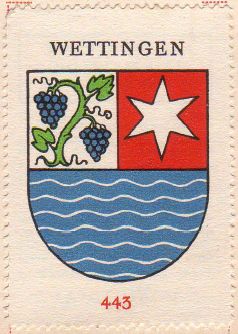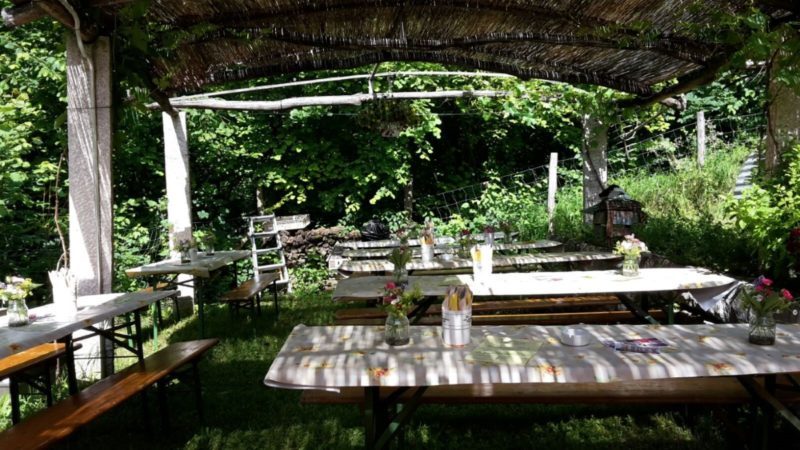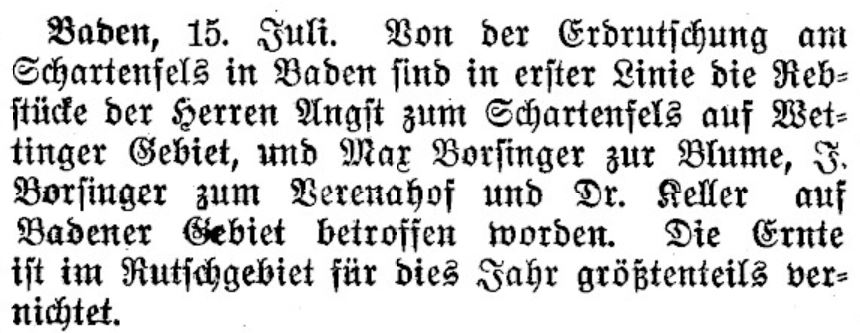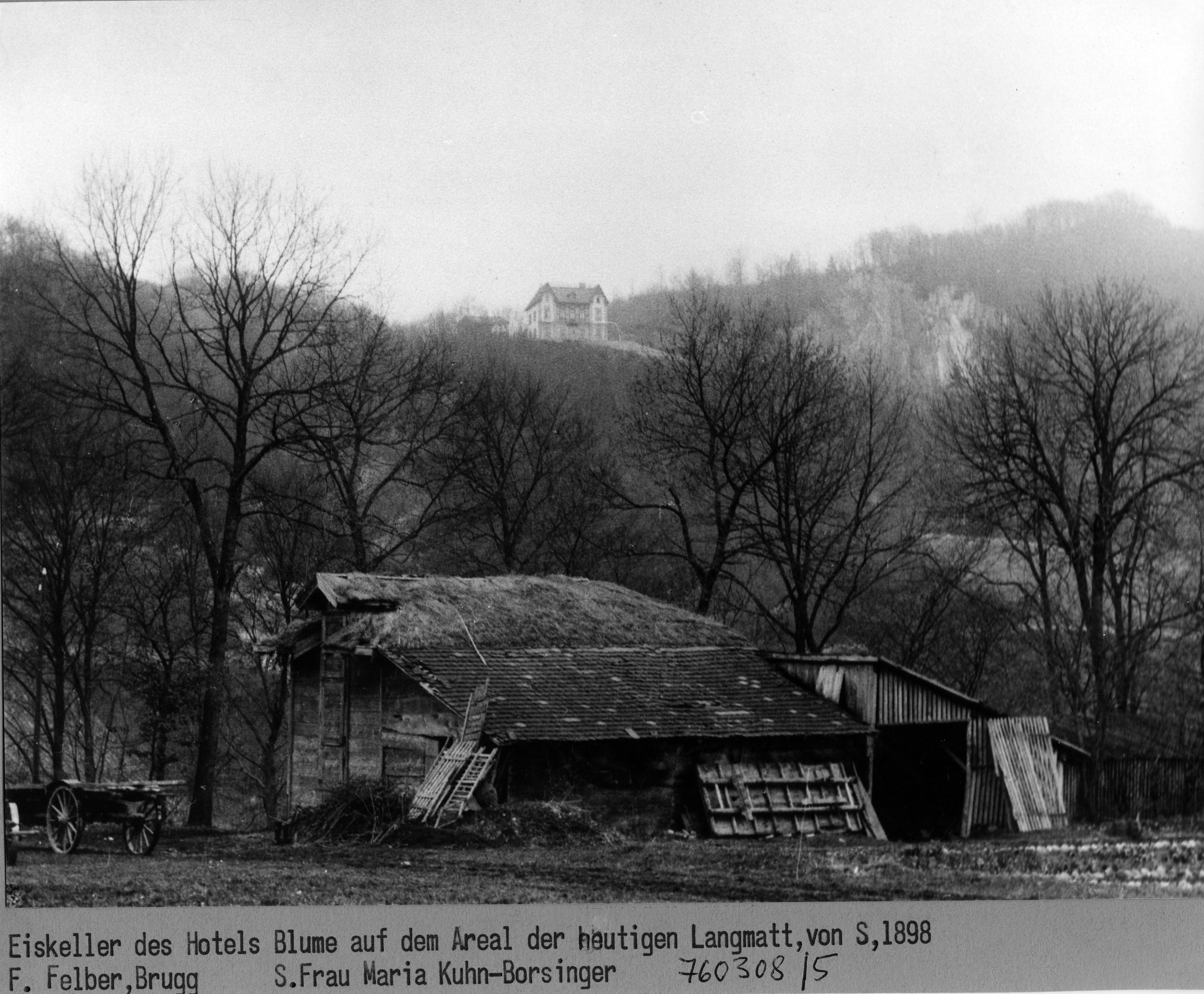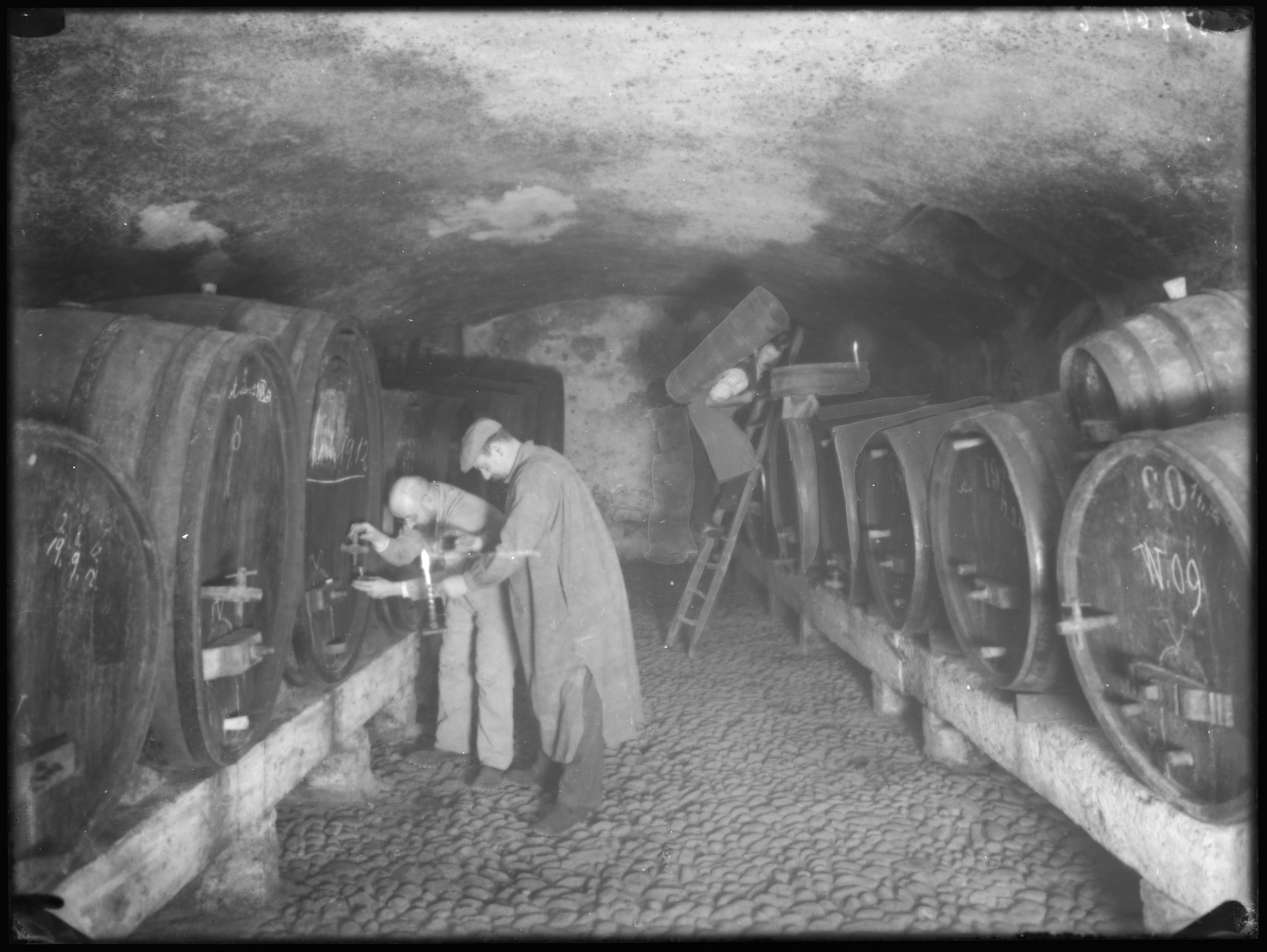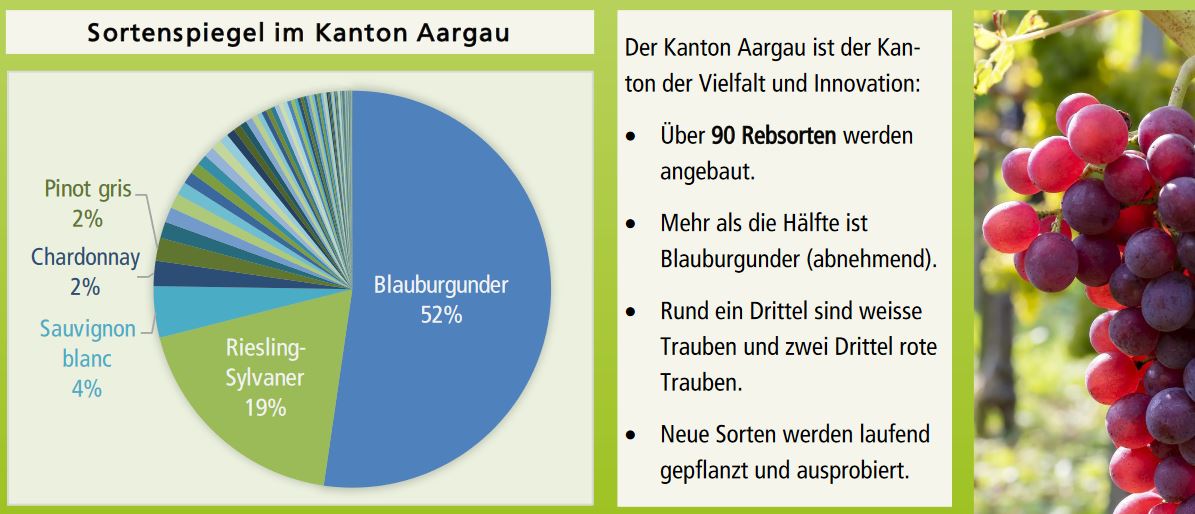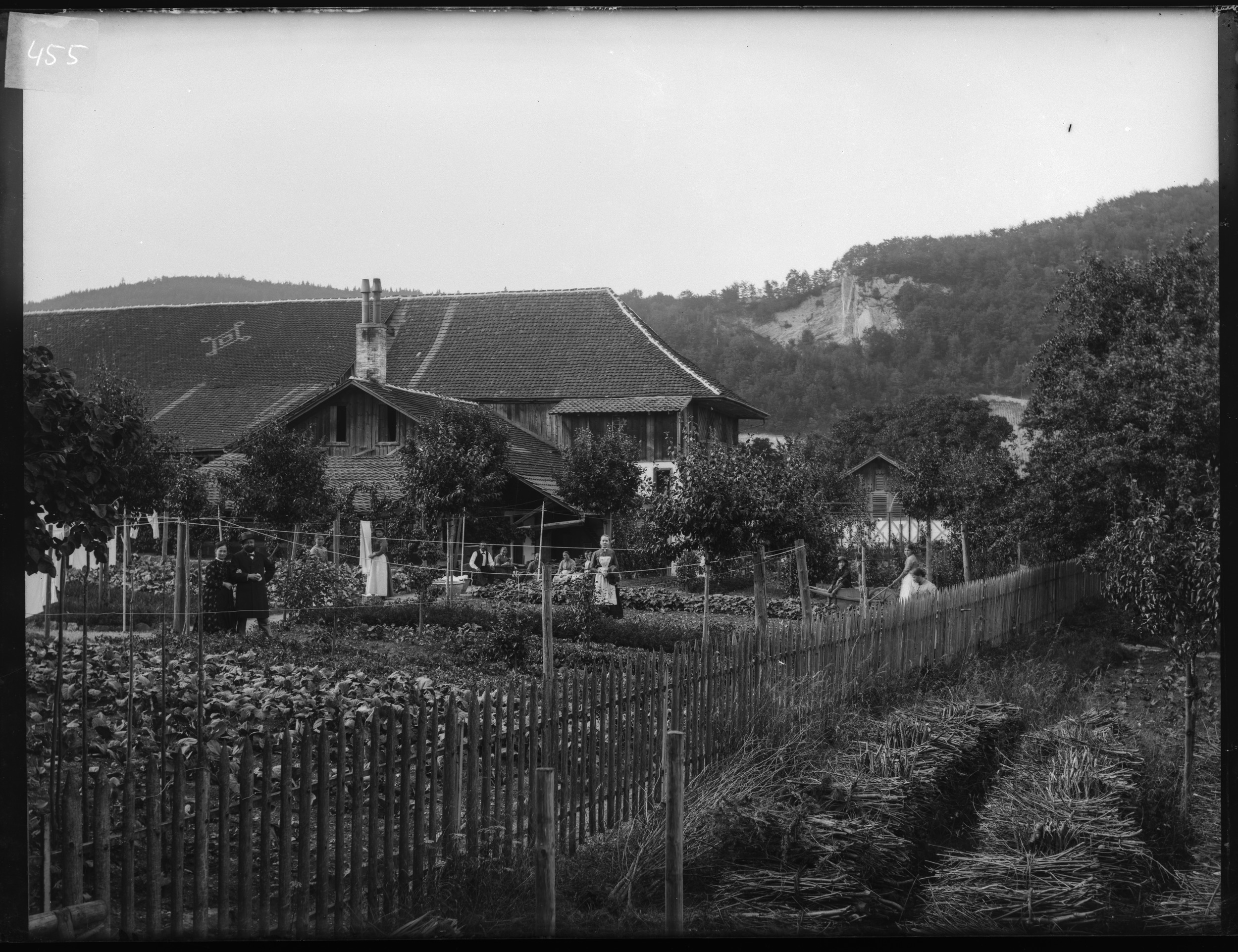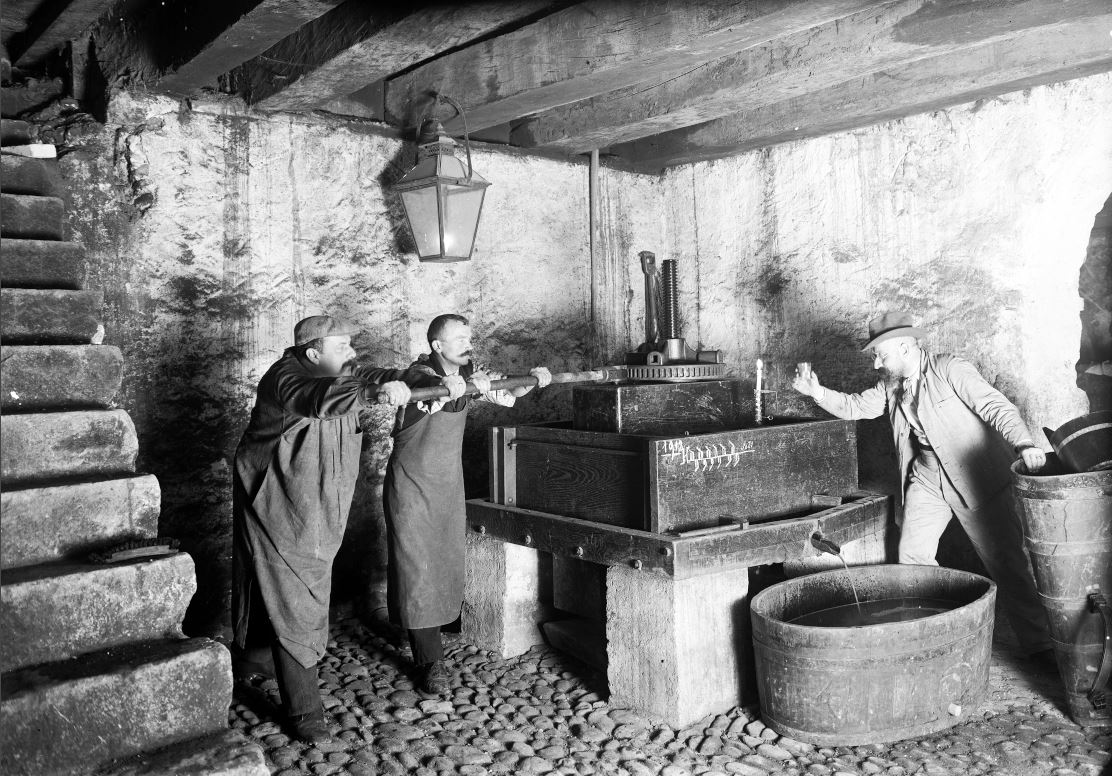
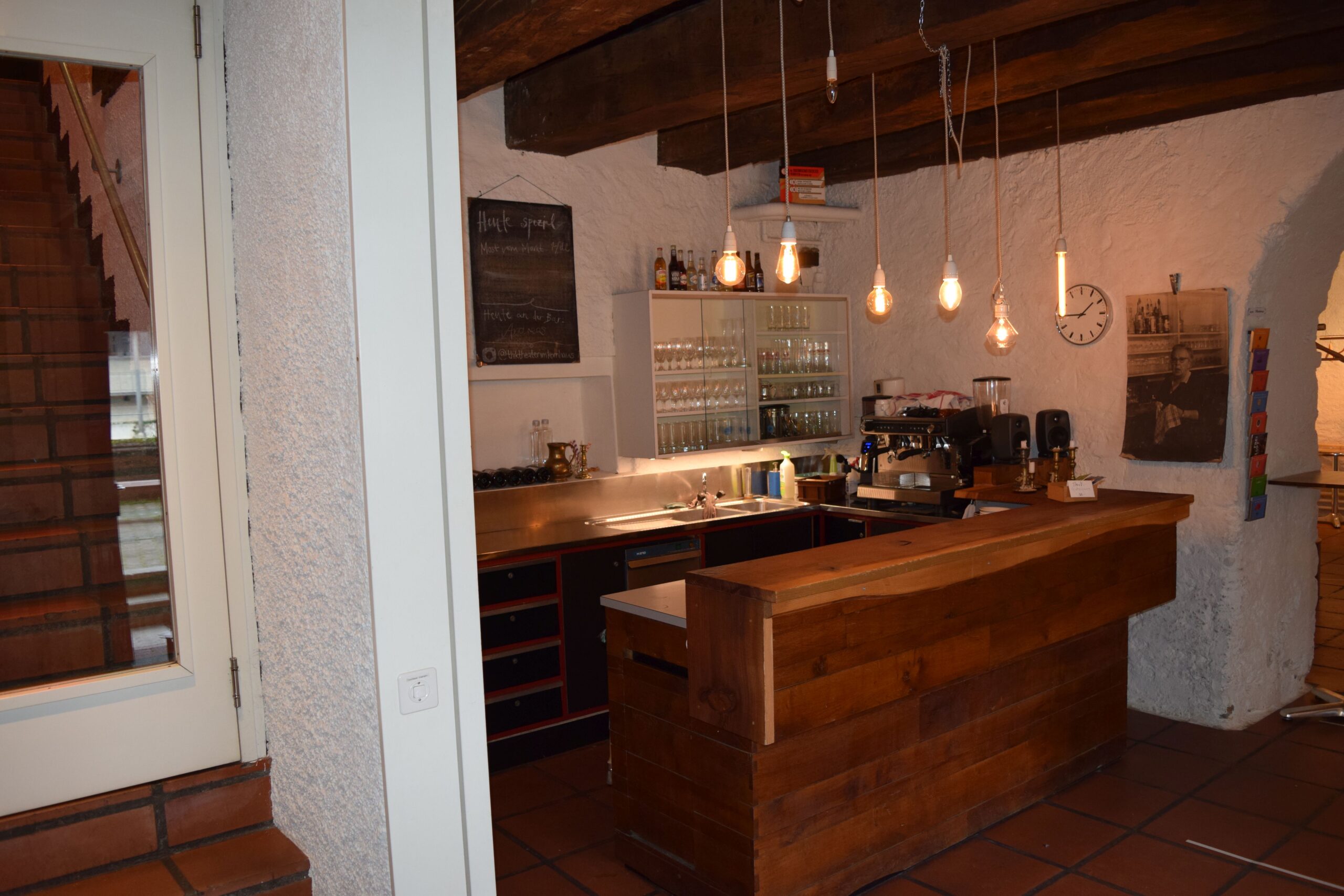
The wine press of the Blume restaurant in the basement of the Kornhaus. Today the bar of the theater ThiK is located there.
Where ThiK guests meet for a glass of wine today, there used to be a wine press. It was also used by the hotelier family Borsinger (Max Borsinger in the picture on the right). The long-time owners of the Hotel Blume had vineyards in the Schartenfels and Wettingerberg.
More information
Already as children and teenagers Silvio and Patrik Erne helped in the vines. Later, they were able to take over the three parcels of vines in Wettingen from their parents. For some time now they have been leased out. Patrik Erne continues to take care of the meadows in Mätteli. At the traditional Räbhüsli-Sonntig (a wine festival in Wettingen), the Ernes run their own tavern: the Blueme-Laube. This is probably the most beautifully situated Räbhüsli in Wettingen – right at the top of the vineyard, including a pond with goldfish and a lawn for the children.
We owe the cultivation of vines and wine culture to the Romans, who brought cultivation methods and plants to the north about 2000 years ago. The ancient wine, however, was very different from our wines of today. It was more viscous and alcoholic, mostly diluted with water and drunk as the main drink – also for breakfast.
In the Middle Ages, winegrowing was closely associated with monasteries, including the Wettingen Monastery, founded in 1227. A saying allegedly passed down by the Cistercians of Wettingen expresses it as follows: «Die Klosterherren ze Wettingen, sie tranken gerne settigen. (meaning: «The lords of the monastery of Wettingen, they liked to drink this one.»)
The wine trade gained importance in the late Middle Ages and generated income for the community through levies such as interest and tithes as well as a wine tax. Most of the inhabitants of the wealthy towns invested in new vineyards, especially on the southern slopes of the lakes and riverbanks.
Vineyards have been documented in Baden since 1300, and in the 14th and 15th centuries vines were planted on the Schlossberg, Limmathalde, Lägern and Geisberg. The trend towards more vineyards spread throughout the entire canton and the whole nation: until around 1800, almost every village contributed to the increase in wine production, which is reflected in the large number of press houses mentioned and preserved. Aargau was a true wine-growing canton, as stated in the 1911 commemorative publication of the Aargau Agricultural Society:
«One can enter our beautiful and fertile Aargau from the east or west, from the north or south, wherever he comes from, he encounters vines. And we can assume that winegrowing is as old in our valleys as in other parts of Switzerland; vineyards may have existed here and there as early as the 8th and 9th centuries. Monasteries, ecclesiastical orders of knights and wealthy noble families encouraged the careful cultivation and spread of wine culture wherever conditions permitted.»
Wine has always been one of the connecting elements of Baden and Ennetbaden (on the other side of the river). Until the 19th century, winegrowing was the main source of income for the inhabitants of Ennetbaden. Since the Middle Ages, the vines on the Geissberg and the Goldwand have produced the town wine, which was drunk by locals and guests of Baden. At that time, the innkeepers in the baths were only allowed to serve their own bath guests. They were strictly forbidden to serve wine outside their houses. Wine was one of the most important sources of income for the town, along with the baths. In the 17th century, six wine presses are mentioned.
Around 1900, phylloxera and fungi such as powdery mildew became more and more prevalent. The consequences were crop failures and with the continuous increase of the population and the enlargement of the settlement area a successive decrease of the vineyards. A change that accelerated after the Second World War and was also reflected in the change of the Wettingen coat of arms. Until 1957, a grape was still depicted there.
«At the same time, as a result of increasing trade, wines came under increasing pressure from cheaper and often higher-alcohol foreign products. The building boom that began after the Second World War also meant that many a beautiful vineyard on a sunny south-facing site had to make way for a neat, detached house. Vineyards almost completely disappeared in many areas. With the decline of the vineyard area to 260 ha, the low point was reached in 1963.»
The Borsingers grew wine themselves for decades. From time-to-time Mathilde Borsinger-Müller tells in her Sylvester book about late frost or other weather events which had a negative effect on the harvest. In 1909, for example, a landslide at Schartenfels destroyed most of the wine harvest. (see also the picture of a newspaper article about this under further pictures).
«Around 400 hectares of vines are cultivated in the canton of Aargau. This makes the canton of Aargau the fourth largest wine-growing canton in German-speaking Switzerland after Zurich, Schaffhausen and Graubünden. The area under vine in Switzerland is about 15,000 hectares. (…) The topographical diversity, the different soil conditions along rivers and lakes or on the slopes of the Jura, as well as the microclimatic conditions mean that viticulture in Aargau can claim to be unique in German-speaking Switzerland, primarily because of its diversity. Today, the canton of Aargau is a small player compared to the rest of Switzerland (especially French-speaking Switzerland), but is always able to show off and inspire with creativity, inventiveness and diverse wines.»
Wettingerweine: Link
Weinbau in Wettingen: Wikipedia
Aargauer Zeitung, 30. April 2019: Der Rebberg von Baden, pdf
Weinbaumuseum: Link
Deppeler, Fabienne: Studie zur Reblaus im Aargau, Universität Bern, pdf.
Brugger, Hans: Geschichte der aargauischen Landwirtschaft seit der Mitte des 19. Jahrhunderts. Eine Darstellung nach der landwirtschaftlichen Statistik. Brugg 1948.
More illustrations
